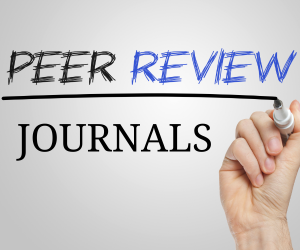IMPACT OF URBANIZATION ON ‘HORH’ PEOPLE AND ROSION OF MAJHI- PARGANA, HUNTING AND TRIBAL MEDICINE IN SHIKAR DISHOM
DOI:
https://doi.org/10.53555/nnmhs.v3i10.614Keywords:
Majhi-pargana (Tribal court), Horh (Tribs/Aboriginal/Above genus), Shikar dishom (Odisha, Jharkhandand West Bengal), Chaigar, Champa gar(Indus vallel)Abstract
The article deals with the study of changes of Socio-Economic and cultural activities of ‘Horh’ (Santhal and other Tribes) as a result of rapid urbanization. It encompasses an extensive survey of the tribes’ dwelling places in urban, fringe and the rural settlements. The salient features include exploration of the physical and cultural background in the case study area. Composition of tribal families in 1951, Horh population growth rate during 1931 to 2001, Urban to Rural Tribal population ratio, the proportion of Horh people affected by urbanization in the study villages i.e. change of their tradition and culture after the urbanization etc. Major findings include: Perceptible changes occurred in Socio cultural system of Horh like Majhi-Pargana system and Tribal Medicine etc. Urbanization and urban development are seen in Paschimanchal (W.B),Jamsedpur(Jharkhand) and Mayurbhang(Odisha) area i.e Shikar Desom of Horh people in India. The process of population growth in the urban area along with the commercial, industrial and transport preferment have favored the recent urban development throughout the areas. These have been accelerated with the overwhelming growth of population in urban areas through migration at acceleration and natural growth. These have given rise to systems of central places, problems of slums and squatter settlements besides enhancing the linkages of industrial centers thereby increasing the entropy of urban places. All these have forced the Governments to think about change in the urban policies, population policies and planning prospects.
In Shikar Dishom Living standard, Educational and Economic condition had changed, they stand developed in all aspects but as a trade-off lost their socio-cultural composition a great deal. They must continue their positive traditional cultures and social traits to avoid the extinction in the long run from the memory of the future generations. It is possible only by the awareness to them. Aboriginal culture has many important things, which need to be preserved and have to continue as Indian culture in the context of sustaining beautiful diversity of Indian culture landscape.
References
.Scheduled Tribes Commission, 1991, Govt. Of Bihar.
.Shilu Ao committee, 1969, Govt. Of Bihar.
.Dalton Edward Toute, 1971, Tribal History of East India,Prentic hall of India pvt, New Delhi.
.Prasad. N, 2012, Social Geography, ACB Publication, Kolkata.
.Murmu pdt. Raghunath, 1972, Bidu Chandan, Printing house, Bhubaneshwar.
.Mondal R.B, 2000, Urban Geography,Orient Publication,New Delhi. vii. Harold, 1991, Study of World urban Geography, Orient publication, New Delhi.
.Kingsley Davies, 1972, World Urbanization, U N Publication, New York.
. Giri Pabitra,2007,Man and urban Environment; The Changing Scenario .(Journalof Indian Anthropo.soc.4(2),p-123132)
.Acharya. S. Sanghamitra and Guite Nathingai, 2006, Indigenous Medicinal Substances and Health Care Journal of Tries and Tribals,4 (2):99-108.
. Ghosh A.K, 2007, Human Society; Perspective Development (Journal,Indian Anthropo.soc.42,115-122.
. Prabhat Khabar,Ranchi,Statement of Surya Singh Beshra-24th December,1996, 73 amendment,Part-09,Article-
It is PESA(Panchayet Extension in Scheduled Area) and Tribal self role) xii. Mahali.S, Ph.D Thesis,page214,2014 “Impact of Urbanization in the Society of Primitive Tribes of East and West Singhbhum Districts in Jharkhand”) xiii. Bogue, 1362, the Tribes of India, Page-340, U N Publication, New York.
Published
Issue
Section
License

This work is licensed under a Creative Commons Attribution 4.0 International License.
Licensing
Ninety Nine Publication publishes articles under the Creative Commons Attribution 4.0 International License (CC BY 4.0). This licensing allows for any use of the work, provided the original author(s) and source are credited, thereby facilitating the free exchange and use of research for the advancement of knowledge.
Detailed Licensing Terms
Attribution (BY): Users must give appropriate credit, provide a link to the license, and indicate if changes were made. Users may do so in any reasonable manner, but not in any way that suggests the licensor endorses them or their use.
No Additional Restrictions: Users may not apply legal terms or technological measures that legally restrict others from doing anything the license permits.





